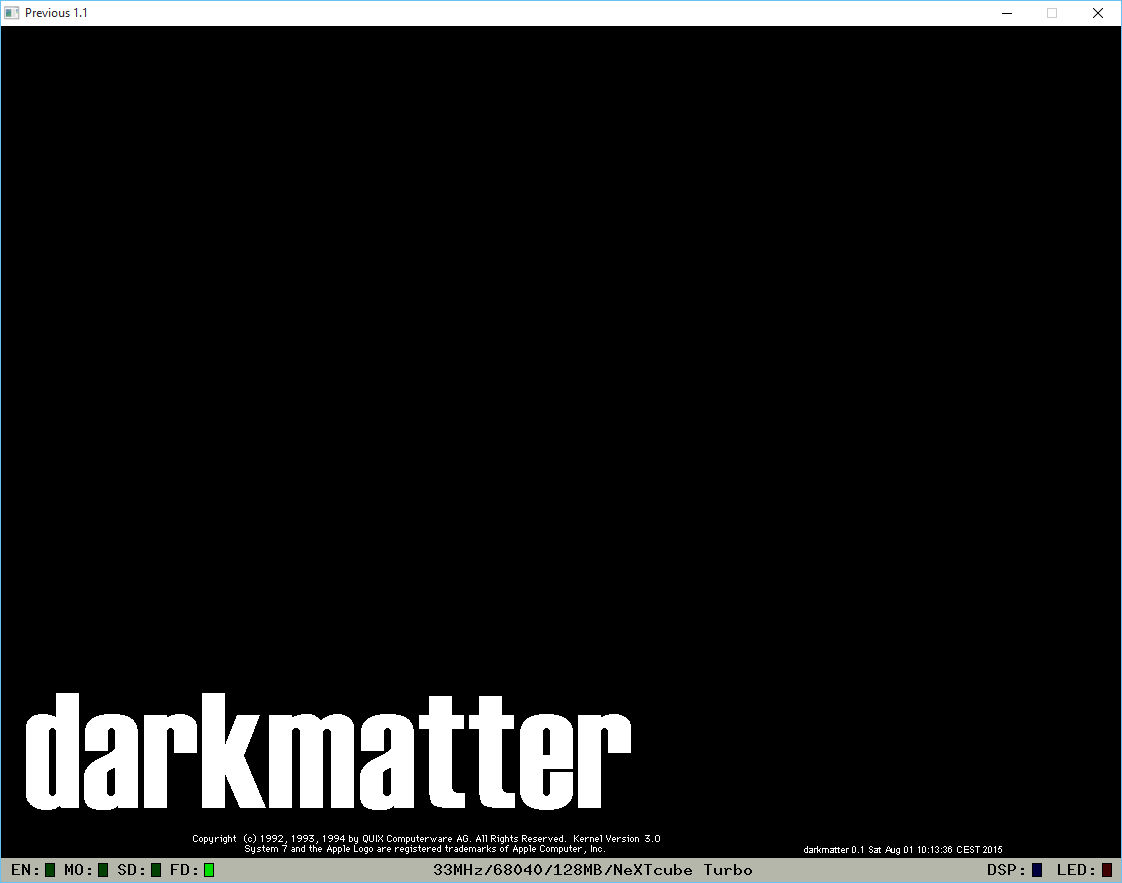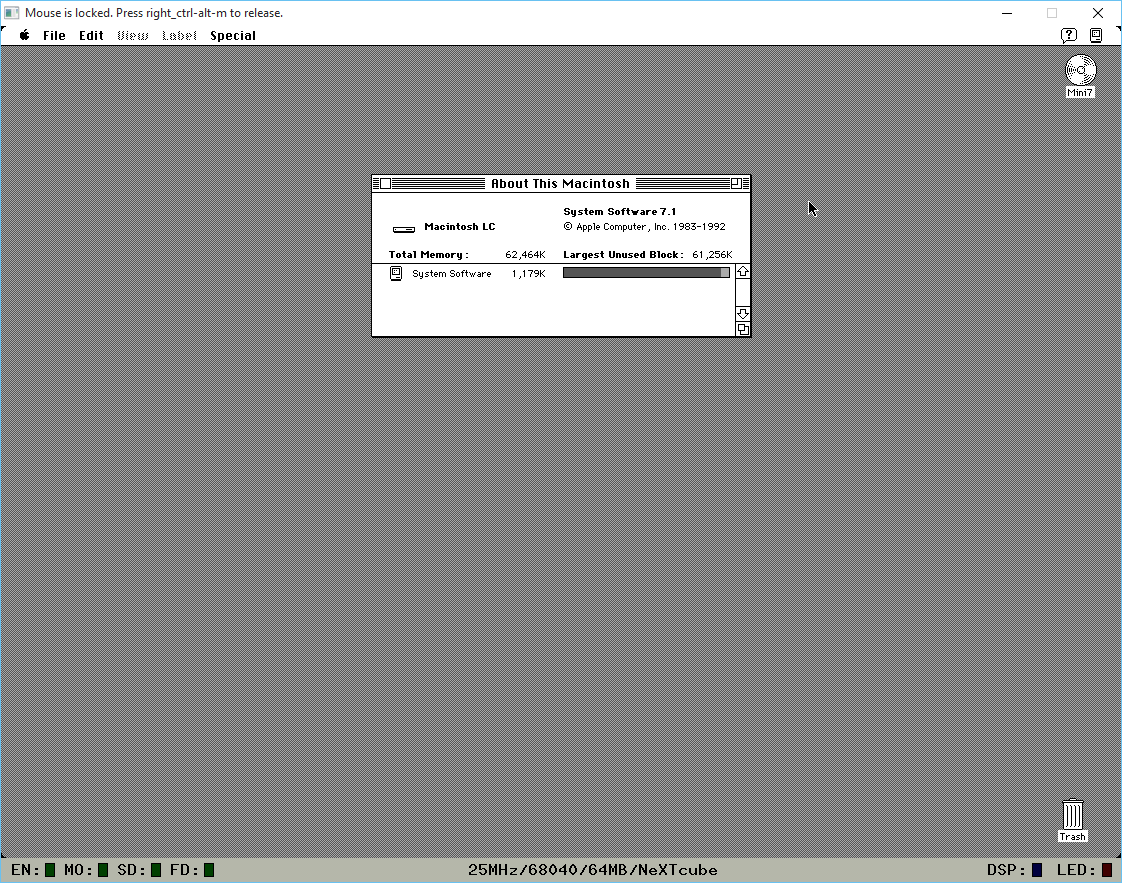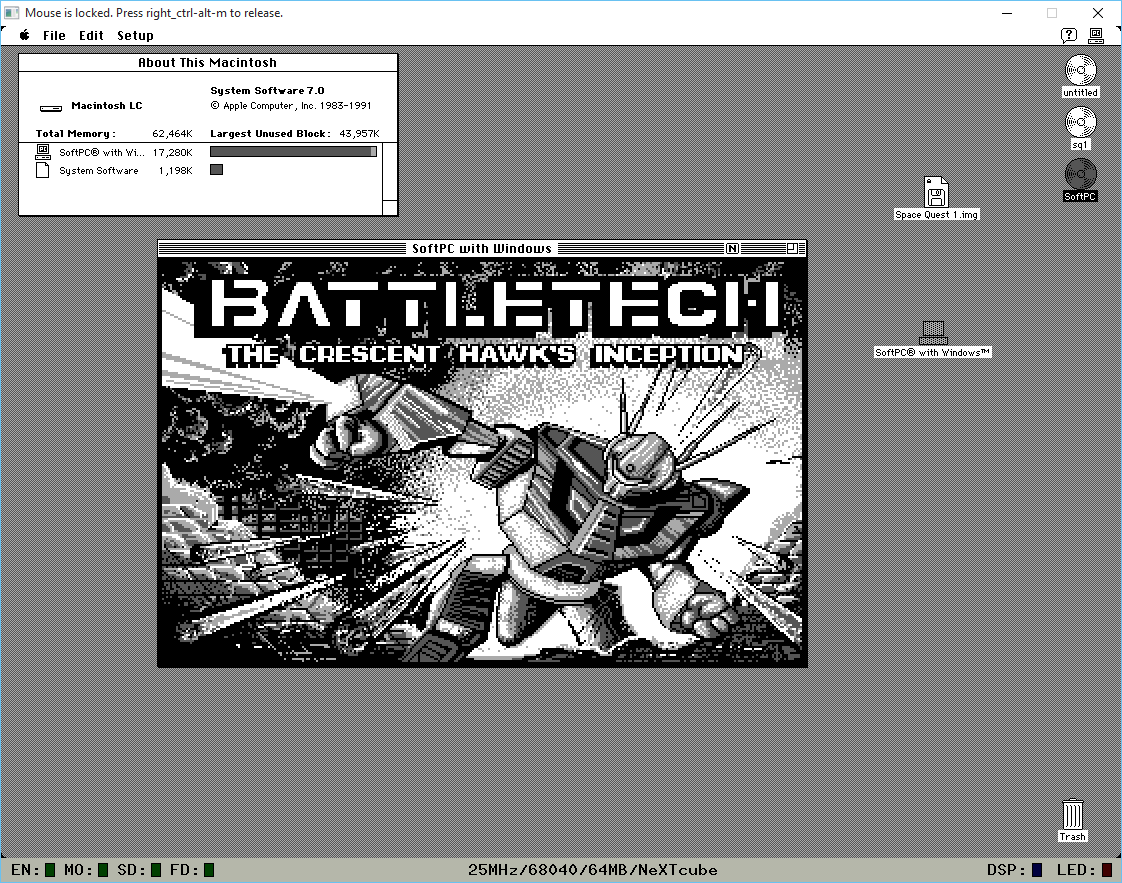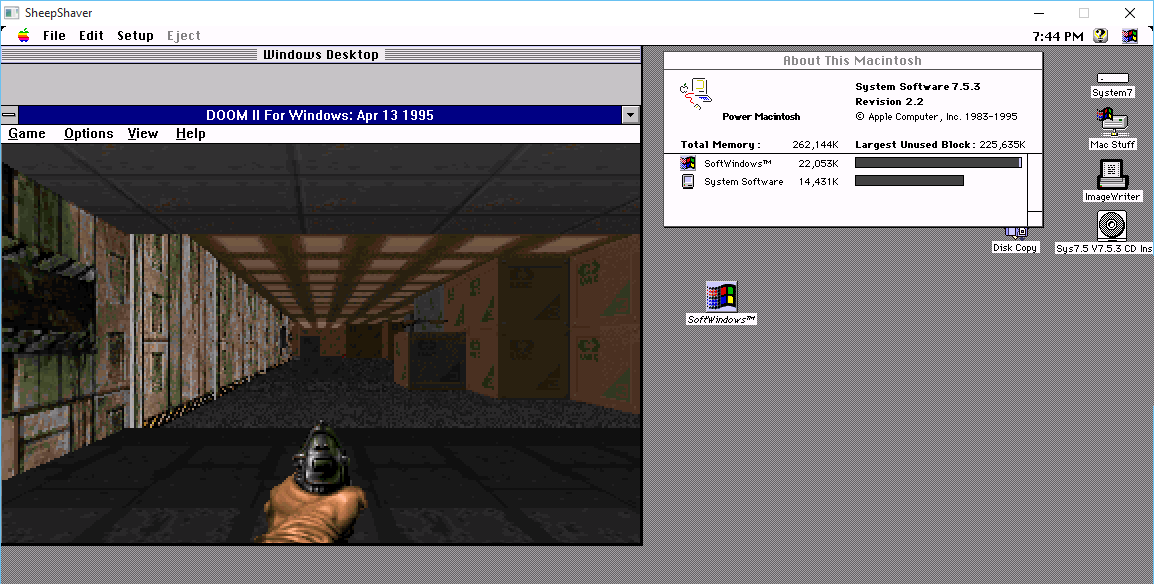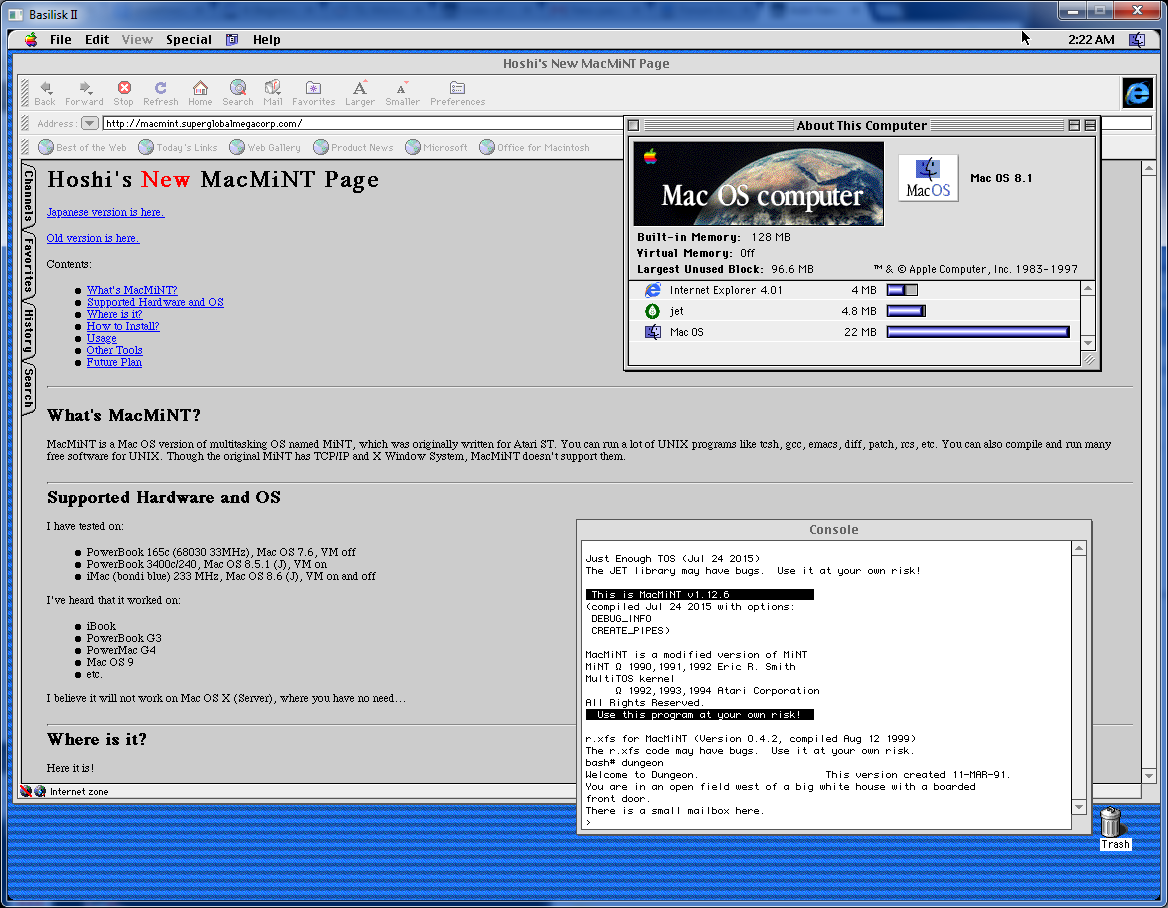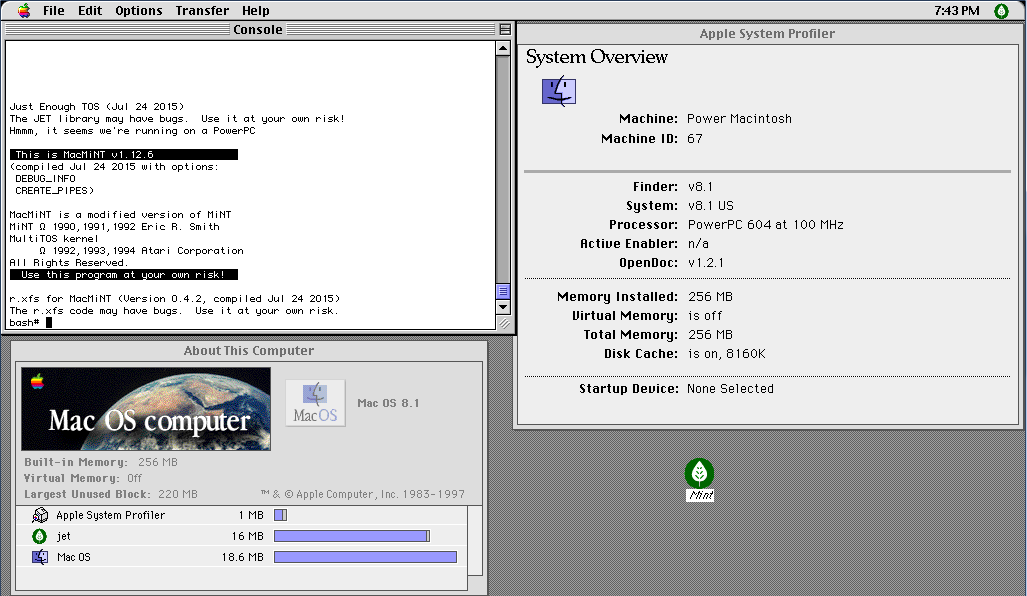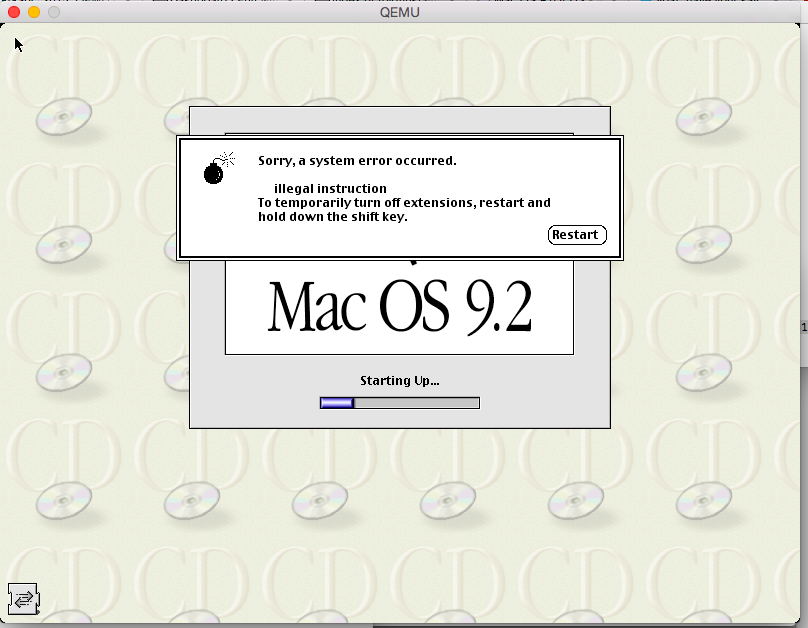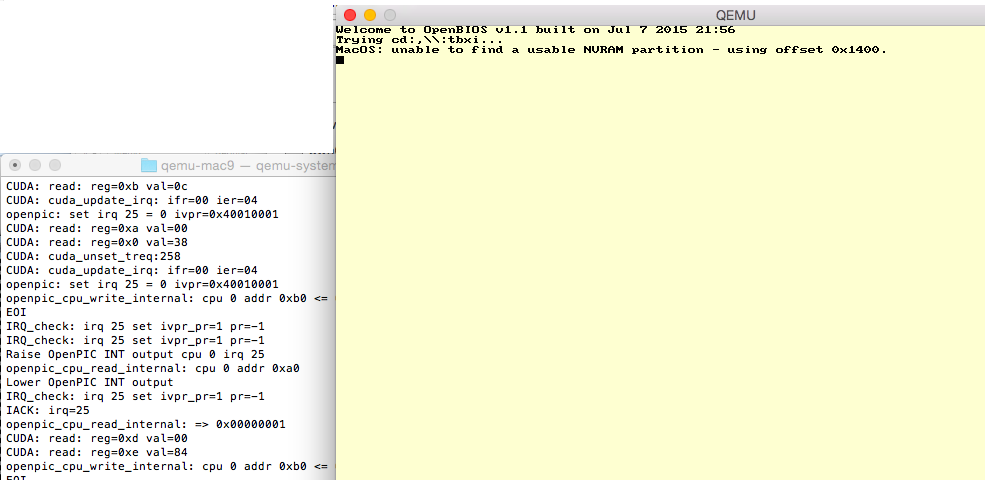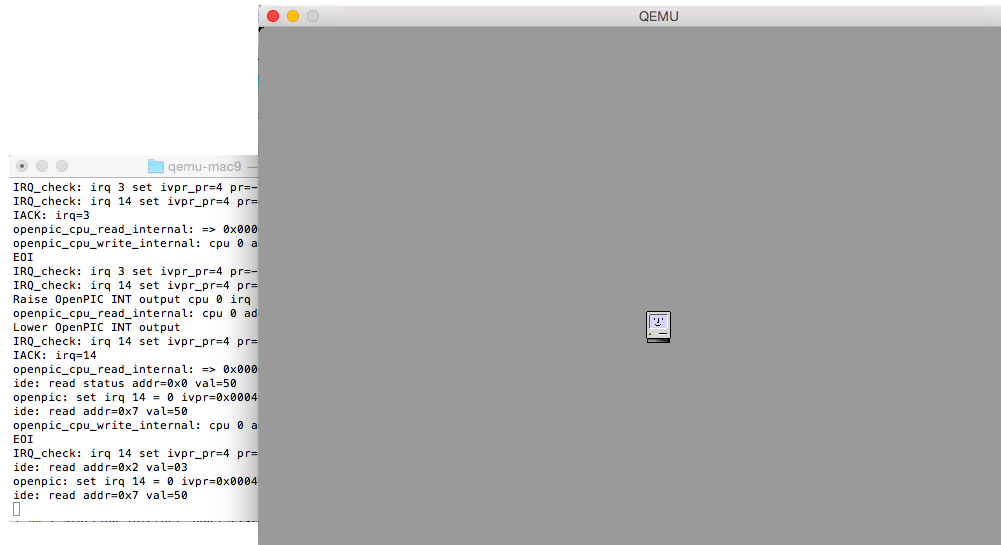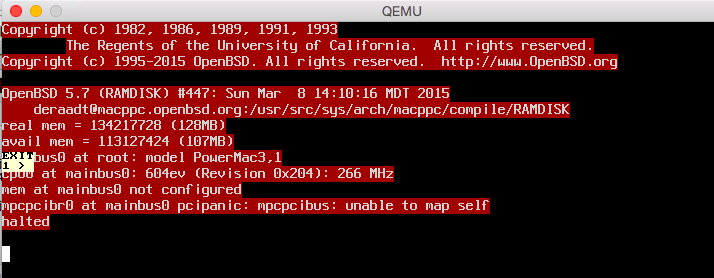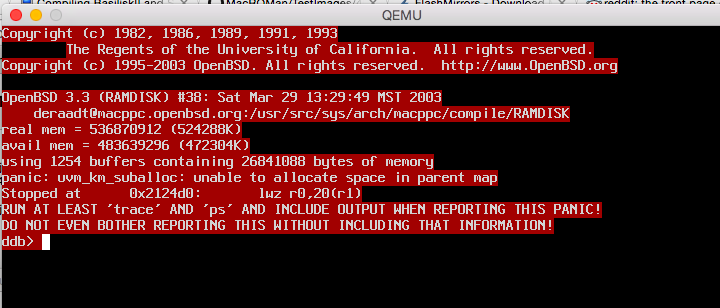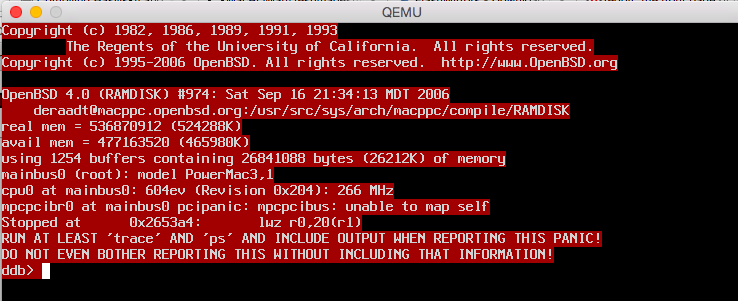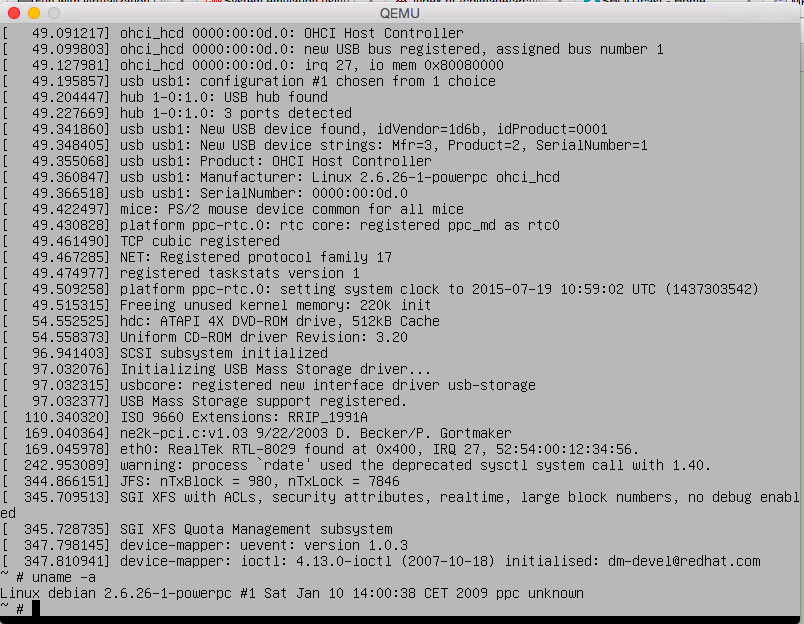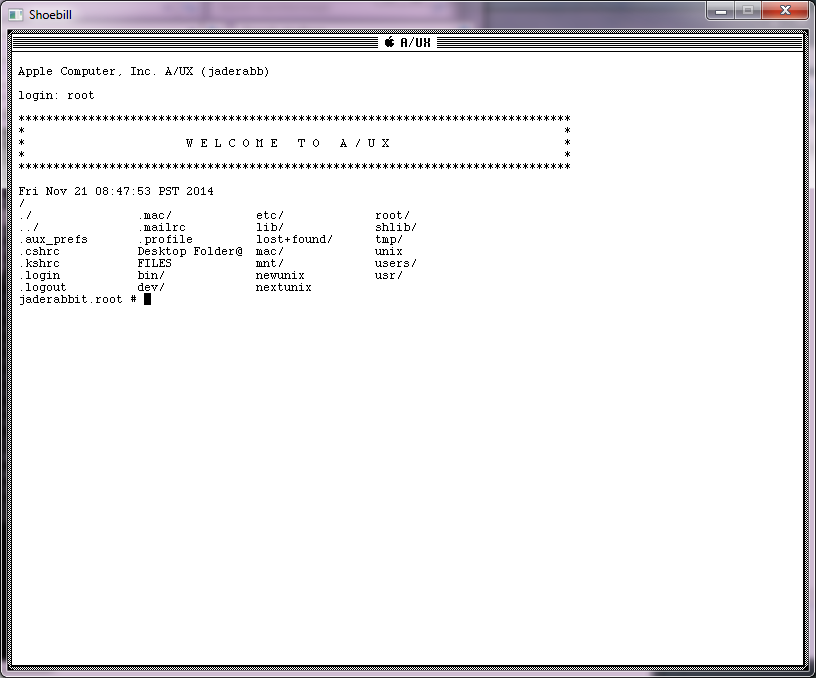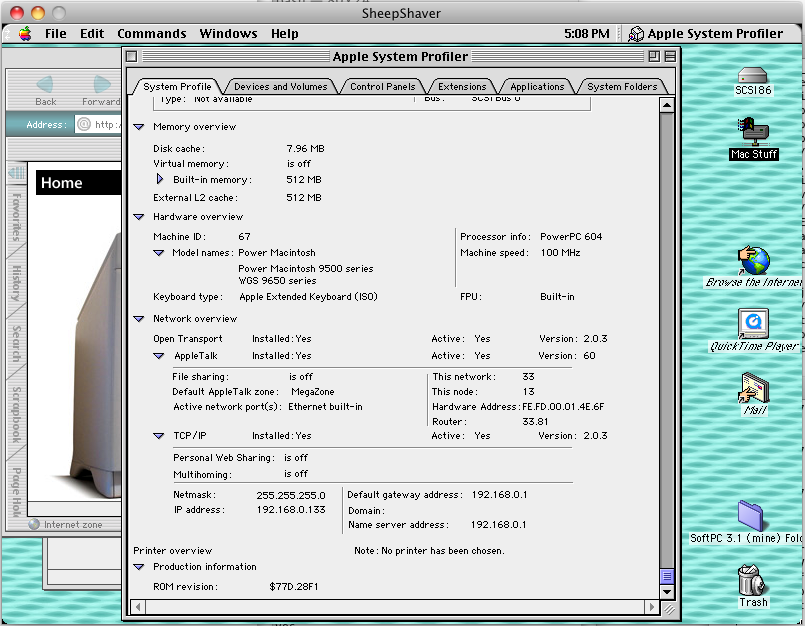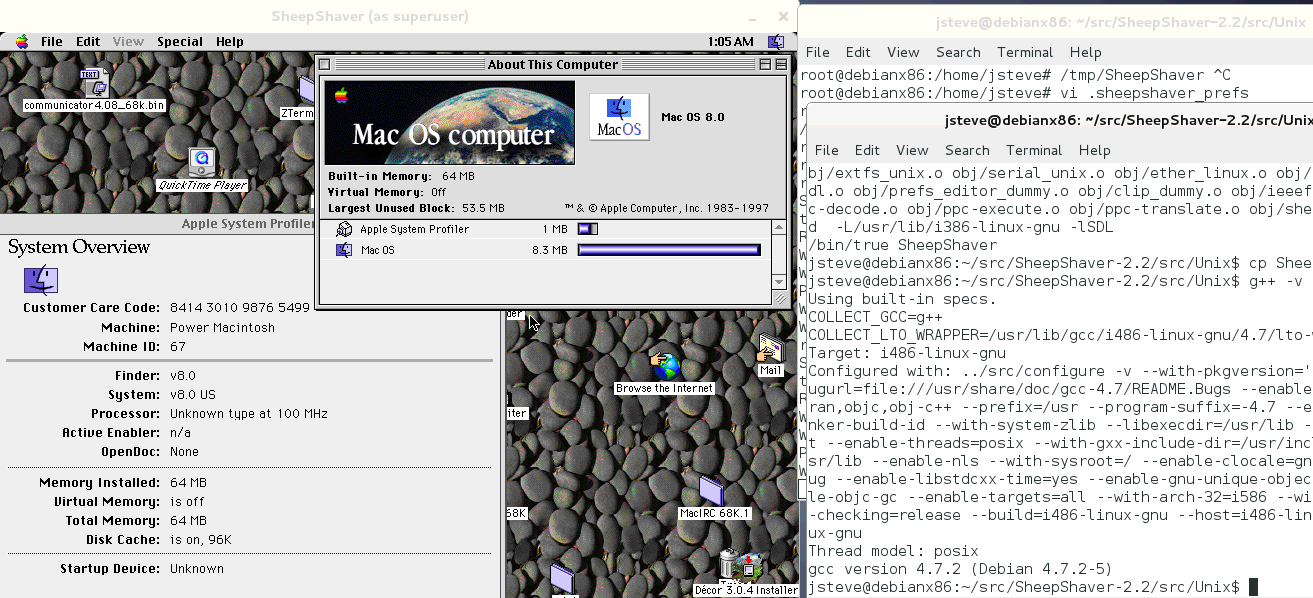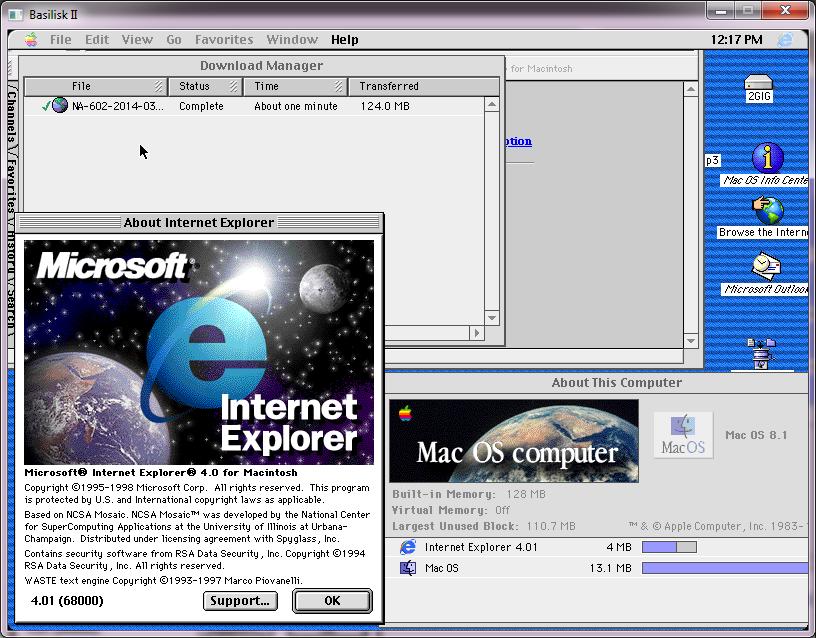so I got it to “work” on OS X….. well 10.6 in VMWare. I have no idea if this means it will work on your setup.
Honestly I feel kind of hesitant releasing this, but I know it was desired, and I guess it’ll help someone somewhere being able to have an easier conversation… So I’m going to upload my source tree, including binaries built with GCC 4.0 & 4.2 with either O2 or Os flags. I’m not sure which is more stable/faster…So
here is my source tree. Sorry you still have to deal with the changing password thing, but cancel it, and it’ll tell you the password.Other lessons learned… SheepShaver’s segfault model only works when the CPU thread is the main thread. Even though you “can” stuff the CPU into a subordinate thread, it doesn’t play nice once it segfaults, it’ll just spin waiting for something that clearly isn’t going to happen.In config.h I added in USEGLOBALvideo as a way for main to call the screen update to end the vast majority of pool leakage. I also added SHEEPSHAVER_CURSOR to enable the hardware cursor. I was having some issues installing OS 8.x when the ‘hand’ was drumming the fingers waiting for the OS to install it crashed many times, while disabling the hardware cursor made it play nicer. Maybe it’s my setup, I’m not sure.
Also in this version I don’t read .sheepshaver_prefs but rather sheepshaver_prefs in the current working directory. I didn’t want to trash any other prefs. I have to test again but I think this should work on 10.10 … As I found out the hard way x86_64 binaries can no longer mess with the zero page, so this is a 32bit only build, but I was running it with my SLiRP fixes ok on my macbook air.
This hasn’t been extensively tested. I hate to even call it tested, I just copied a few MB of stuff over an NT server running AppleTalk,a nd viewed some flash video with Internet Explorer 5.1 …. I’m sure there are PLENTY of things broken. JIT should work with these binaries (Quake 1 is quite playable), but DOOM crashes hard (isn’t it a 68k binary?). DOOM runs ok on Basilisk II so does it matter?
If you want speed, JIT + SLiRP is the way to go. Since this is basically the same as the version I was using with BasiliskII I think it’s more stable than the generic version as I could at least run all kinds of programs with some of my fixes vs the ‘stock’ github version.
I should add that I’ve been primarily testing with that PowerMac 9500 v1 ROM, along with MacOS 8.6. I found 8.0 and 8.1 too unstable, 7.x & 9.0.4 uninteresting.
To get around the early crashing while booting 8.6, I rigged it to drop the first 30 packets. I’ve successfully booted 10/10 times, so I’m almost OK with that. I’d rather know when the OS is ok, and go with that, but I’m not sure. I thought about a timer, and say ignore the network for the first 30 seconds, and maybe that is the better way to go. When you launch this you’ll see some message updating about packets and “wait for 30->” and a number… once it reads “wait for 30->30” , the message will no longer update, and it’ll start to forward packets into the machine. You probably will have to disable and re-enable AppleTalk from the chooser to see the network (or I had to). You may have to get creative to generate the needed packets on your network to get it over 30, as those are packets received. Broadcast packets work too, so maybe you can work with that… As long as Sheep Shaver isn’t alone something should be looking for other devices.

